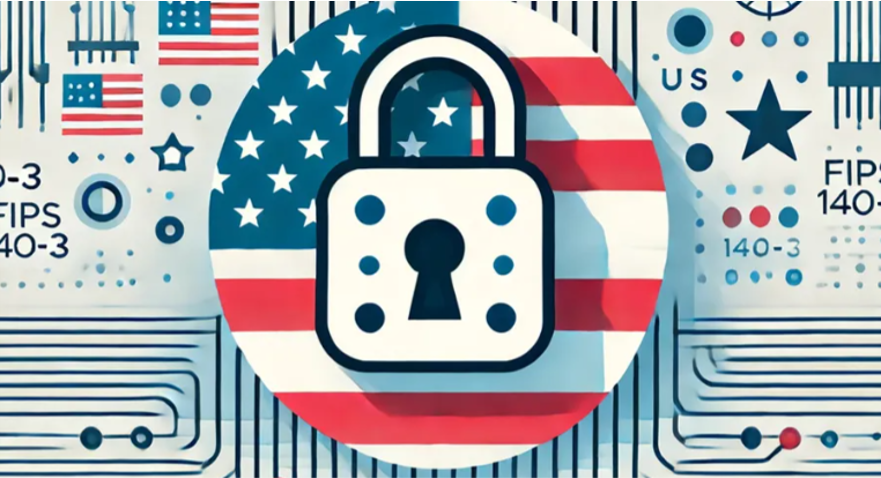Industry Expert Blogs

|
FIPS 140-3: Enhancing Cryptographic Security for Modern ChallengesChris Collier -Jul 02, 2024 |

FIPS 140-3 (Federal Information Processing Standards Publication 140-3) is the updated standard for cryptographic modules used by the U.S. government, replacing the older FIPS 140-2 standard. Established by the National Institute of Standards and Technology (NIST), FIPS 140 standards provide guidelines for the design and implementation of cryptographic modules, which are essential for securing sensitive but unclassified information. FIPS 140-2, introduced in 2001, became a widely accepted benchmark for cryptographic security.
However, with advancements in technology and the emergence of new security threats, there was a clear need for an updated standard. The transition to FIPS 140-3 incorporates various improvements and changes that enhance the security and functionality of cryptographic modules. Let me point out some of the key updates and differences introduced in FIPS 140-3:
1. Alignment with ISO/IEC Standards
- FIPS 140-3 is aligned with the international standard ISO/IEC 19790:2012 for security requirements for cryptographic modules. This alignment ensures consistency with global standards, facilitating international acceptance and interoperability.
2 .Updated Security Requirements
- Entropy Sources: Enhanced requirements for entropy sources used in random number generation. The new standard specifies stricter criteria for the quality and robustness of entropy sources, improving the overall security of cryptographic operations.
- Module Interfaces: More detailed specifications for the interfaces and protocols used by cryptographic modules, ensuring secure communication and data handling within and between modules.
3. Testing and Validation
- Enhanced Testing Protocols: Improved testing methodologies for validating cryptographic modules, including more rigorous procedures for assessing compliance with security requirements.
- Automated Testing Tools: Encourages the use of automated tools to streamline the testing and validation process, increasing efficiency and accuracy.
4. Security Levels
- Revised Security Levels: The standard maintains the four security levels (1 to 4) used in FIPS 140-2 but includes updated requirements and guidance for achieving these levels. This ensures that cryptographic modules meet contemporary security needs and threats.
- Physical Security: Enhanced physical security requirements, particularly for higher security levels, to protect cryptographic modules against tampering and physical attacks.
5. Role-Based and Identity-Based Authentication
- Clearer guidelines on implementing role-based and identity-based authentication mechanisms. These requirements ensure that only authorized users can access and manage cryptographic modules, enhancing overall security.
6. Documentation and Reporting
- Improved Documentation Requirements: More comprehensive documentation requirements for cryptographic module development, implementation, and testing. This includes detailed reporting on security policies, design specifications, and test results.
- Incident Reporting: New guidelines for reporting security incidents and vulnerabilities related to cryptographic modules, promoting transparency and timely mitigation of security issues.
7. Life Cycle Assurance
- Life Cycle Management: Updated requirements for the secure development, distribution, and maintenance of cryptographic modules. This includes guidance on secure coding practices, configuration management, and software updates.
- Obsolescence and End-of-Life: Guidelines for managing cryptographic modules as they become obsolete or reach the end of their life cycle, ensuring that outdated modules do not compromise security.
Summary of Key Differences from FIPS 140-2
- International Alignment: FIPS 140-3 aligns with ISO/IEC 19790:2012, while FIPS 140-2 does not, making FIPS 140-3 more consistent with international standards.
- Entropy and Random Number Generation: Stricter and more detailed requirements for entropy sources in FIPS 140-3, compared to FIPS 140-2.
- Testing Enhancements: Improved and more rigorous testing protocols, including the use of automated tools in FIPS 140-3.
- Updated Physical Security: More detailed physical security requirements, especially for higher security levels.
- Life Cycle Assurance: Enhanced requirements for life cycle management and secure development practices in FIPS 140-3.
- Documentation: More comprehensive and detailed documentation and reporting requirements in FIPS 140-3.
Conclusion
FIPS 140-3 brings significant improvements and updates to the cryptographic module standards, addressing modern security challenges and aligning with international standards. These changes enhance the robustness, security, and interoperability of cryptographic modules used by the U.S. government and other organizations.
Swissbit is dedicated to the security profile of our customers, and we are proud that theiShield Key is part of the IUT list to follow #FIPS 140-3 Level 3 supporting strong and phishing-resistant multi-factor authentication in U.S. federal agencies and government. By leveraging the latest cryptographic standards, Swissbit provides the highest level of hardware security available, while delivering future-proof technology to our customers.
